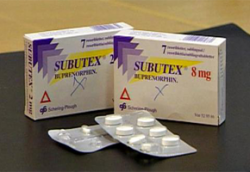Types of Medications Used in Treatment for Opioid Addictions
Medications combined with counseling and behavioral therapies have proven beneficial for opioid addicts to regain stability in their lives and function in daily activities with a sense of normalcy. There are three types of medications used in these treatment programs.
- Agonists, such as Methadone and LAAM, activate opioid receptors to prevent withdrawals and act as a safe medication to replace the rewarding effects of opiate abuse.
- Partial agonists, such as Buprenorphine (Subutex, Suboxone),activate opioid receptors but produce a diminished response which relieves cravings without producing the “high” or dangerous side effects of opioids.
- Antagonists such as Naltrexone block the receptors and interfere with the rewarding effects of opioid use.
About Methadone Maintenance Treatment
According to the Substance Abuse and Mental Health Services Administration, “The longer you’ve been dependent on opioids, the more likely it is that you would benefit from being on methadone.” Methadone maintenance treatment providers are specially licensed and subject to strict monitoring and reporting practices for which most physicians choose not to be involved. Therefore, most methadone maintenance programs involve daily trips to a methadone clinic for doses of methadone until the treatment administrators determine that the person is eligible for take home doses. Between the various fees and travel costs, not to mention the time involved, many people find these programs unsuitable for their lifestyle.
Alternatives to Methadone Maintenance Treatment

Subutex contains buprenorphine and is an alternative to methadone.
- LAAM – L-alpha-acetyl-methadol (LAAM), like methadone is an opioid agonist. However LAAM has a longer duration than methadone and only requires dosing every two or three days. LAAM treatment is not as widely used as methadone and is unavailable in some markets.
- Buprenorphine (Subutex, Suboxone) – Buprenorphine and other buprenorphine hydrochloride medications such as Subutex and Suboxone are opioid partial agonists which produce less opioid agonist effects than the agonist, methadone and is limited to a maximum response. This means that at low doses, they can produce enough effects that the opioid addicts will not have the cravings for opiates or have opiate withdrawal symptoms and they can discontinue the misuse of opioids. Once a certain dosage level is reached, known as the “ceiling effect” the individual will not benefit from higher doses and, in fact, the increase will block the effects of opioid agonists, thereby, reducing the abuse. These treatment programs have become a preferred method to treat opioid addictions outside of methadone maintenance and formal rehabilitation programs.
- Naltrexone and naltrexone hydrochloride products such as Depade, Revia, and Vivitrol work by blocking opioid effects, but, they have less effect on the opioid cravings than the other alternatives to methadone maintenance treatment. Naltrexone is often used in rapid detox regimens to reduce the effect or withdrawals and then it is prescribed for monthly doses up to 12 months for opioid dependence management.









